Top Projects That Will Reshape Austin
Home to a host of sprawling developments and infrastructure improvements, the metro is in the midst of a robust expansion.
Check out our other articles in the series to discover the top projects reshaping San Francisco, Tampa, Los Angeles, Phoenix and Queens.
Austin’s popularity and subsequent expansion have been gaining momentum for almost two decades now, fueling the construction of massive projects throughout the metro. With a diverse workforce, a booming housing market and several major infrastructure projects underway, the metro is likely to maintain its place as a global destination for job creators and seekers alike, as well as students and innovation, a Downtown Austin Alliance spokesperson told Commercial Property Executive.
Ranging from massive mixed-use developments to infrastructure improvements, below is a list of noteworthy projects expected to transform Austin in the years to come. These ventures all share a strong commitment to sustainability, affordable housing and mobility, as well as enhancing people’s well-being and quality of life.
READ ALSO: Top Projects That Will Reshape Los Angeles
1. The Texas State Capitol Complex
The Texas Facilities Commission’s nearly $900 million complex is well underway and taking shape on four blocks in downtown Austin. Drawing on a 2016 master plan, the iconic project reimagines the Capitol Complex that will centralize all state agencies. Upon completion, the buildings are expected to save taxpayers $25 million on leases each year.
The two-phase mammoth development is set to include four new buildings totaling some 1.5 million square feet, underground parking and a 3-acre pedestrian mall. The $581 million first phase broke ground in mid-2018 and includes the 603,000-square-foot George H.W. Bush Building at 1801 Congress Ave. and the 416,000-square-foot 1601 Congress Ave. facility. Phase 1 is due for delivery in 2022.
With $313.7 million approved for Phase 2, construction is forecast to begin in late 2022 and complete in 2025, encompassing another pair of office buildings and an extension of the mall.
Major utility relocation efforts such as the cleanup and upgrade of the inlet to Waller Creek at 18th and San Jacinto, and irrigation/waterlines designed to be reclaimed-water ready are just a few examples of infrastructure improvements made in the area.
“We have also worked with the city of Austin and Texas State Preservation Board to reshape the site’s one-way streets to two-way streets and have planned for B-cycle stations at various locations,” Prince Chavis, project manager with TFC, told CPE.
In addition, the project will incorporate incentives for shared-use vehicles, carpool and electric vehicle charging stations, as well as multiple strategies in building automation design. With more than 900 caliper inches of new trees included in the first phase, sustainable building materials and minimization of waste through innovative construction methods, the project aims to improve the health and life quality of employees, visitors and residents, Chavis noted.
2. Project Connect
The Austin Transit Partnership’s $7.1 billion public transportation expansion, approved in the November election, is slated to include a new rail system, expanded bus service, a downtown transit tunnel and nine new park-and-rides throughout the region. The organization behind the plan, a partnership between the Capital Metropolitan Transportation Authority and the city of Austin, will secure financing from property taxes, Capital Metro funds and federal grant revenues.
“The program is an opportunity to help ease traffic congestion, reduce air pollution and strengthen connections and equitable opportunities in our community,” a Capital Metro spokesperson told CPE. According to the transportation authority, about 74 percent of Austinites drove to work alone in their cars before COVID-19.
“A zero-emission bus fleet is a primary goal and Capital Metro is committed to the use of innovative technology to create a more efficient, quiet and sustainable transit system. … By moving more people with fewer vehicles, public transportation can reduce greenhouse gas emissions. For buses, the reduction is more than 33 percent over private vehicles,” the spokesperson added.
Project Connect’s initial investment plan features 27 miles of rail service and 31 stations, and includes $300 million for anti-displacement investments, which will aim to create and preserve affordable housing along the new transit corridors. According to Capital Metro, for every billion dollars spent, approximately 21,800 jobs will be supported.
“Our region is expected to double in population in less than 20 years. Project Connect will be able to move more people more efficiently with two new light rail lines, enhanced commuter rail and several metro rapid busses,” an Austin Chamber of Commerce spokesperson said.
Projects that are faster to deliver, such as the MetroRapid routes, will begin construction as soon as this year, a Capital Metro spokesperson confirmed, adding that the team is advancing environmental and engineering efforts for the Orange and Blue lines, the Pleasant Valley and Expo MetroRapid routes, and McKalla station along the Red Line.
Project Connect is also expected to improve airport access, positively impacting conventions and hotel revenues in the long run, and allowing for future growth in the region, which is currently constrained by the capacity of roadways and rail stations, a Downtown Austin Alliance spokesperson observed.
READ ALSO: Will CRE Benefit From the $2T Infrastructure Plan?
3. East Village
The 425-acre, mixed-use development taking shape in Austin’s northeast technology corridor is set to feature office and retail space, housing, restaurants, hotels, a grocery store and a movie theater. Developed by a Reger Holdings and KB Home partnership, East Village will also include a variety of open spaces and common areas for gatherings and events.
“An expansive green belt separates the mixed-use commercial and multifamily from the single family, with an interconnecting trail system,” Cara Kane, KB Home spokesperson, explained. The project, “an urbanist dream development of connecting residents,” provides a mix of lifestyle living, within walkable retail and entertainment options, Kane added.
East Village’s single-family homes will be Energy Star-certified, with high-performance ventilation systems, low- or zero-VOC products and other features guided by the EPA’s indoor airPLUS standards, Kane mentioned. Additionally, East Village will incorporate a dedicated circuit for EV car charging.
Constructed just off Parmer Lane, the project will be near major Austin employer Samsung, with the location ensuring easy access to Interstate 35 and Toll 130, which in turn, provides access to one of Austin’s newest employers, Tesla.
4. Waterloo Greenway
Waterloo Conservancy is revitalizing downtown Austin’s largest green space, with Waterloo Greenway scheduled to open later this summer. The Conservancy’s mission is to restore the previously dilapidated Waller Creek to a thriving, diverse park ecosystem.
Work on the project has advanced throughout the pandemic, Melissa Ayala, Community Engagement and Government Relations Director for Waterloo Greenway, said. The project includes 11 acres of green space, 1.5 miles of trails, “the stunning Hill Country Gardens, the Moody Amphitheater and so much more to explore,” she explained. The park will also serve as a hub for culture, entertainment and art.
“Once complete, the 35 acres of connected green space—meandering from 15th Street along downtown’s eastern edge to Lady Bird Lake—will be home to a wild array of natural and cultural destinations,” added a Downtown Austin Alliance representative.
Waterloo Greenway incorporates highly sustainable features, Ayala noted, including three rain gardens supplied by a cistern that captures groundwater in front of the main performance stage. Further elements include four green roofs; 18,000 cubic yards of engineered soils, some 500 trees and the relocation of several heritage trees; an irrigation system pumped from Waller Creek; and 62,000 new plants from 170 different species.
“Revitalizing this area and supporting the recovery of local entertainment industries, including the Red River Cultural District, provides economic relief to surrounding businesses, creates local jobs and paves the way for a more equitable Austin,” Ayala noted.
5. Velocity
Initially dubbed Velocity Crossing, the 390-acre mixed-use development is taking shape at the intersection of highways 71 and 130 in Southeast Austin, within a 5-minute drive from Tesla’s Texas Gigafactory. Developed by a joint venture between Marketplace Real Estate Group and Presidium, the project’s internal roadway system is already underway.
The 7 million-square-foot development will feature 2,683 multifamily units, 2.9 million square feet of office space and 585,000 square feet of flex/industrial and creative office space, as well as 310,000 square feet of retail, restaurants, a cinema and three hospitality spaces. Velocity is also set to feature a 42-acre public park along Onion Creek.
“The biggest thing the pandemic did was validate our decision to have so much open space and access to Travis County’s larger trail system,” said Mark Bulmash, president of mixed-use/master plan development at Presidium.
Presidium anticipates the first residential building, a 295-unit property, to break ground this year. Velocity will be anchored by an H-E-B grocery store and a Chanel-Capsum cosmetics factory.
“The key reason the community has been supportive is because of the tremendous public benefits that are anticipated to come about as a result,” Bulmash mentioned, estimating the economic impact from various employers to amount to “hundreds of millions of dollars.”
6. River Park
Another Presidium venture, this time in partnership with Partners Group, River Park’s master plan has also undergone a revamp. All 97 acres that went through the zoning process, plus the adjacent 12-acre Parke Green retail center that the partnership also owns, are all part of a master plan, Michal Pino, director of development at Presidium, clarified.
The master plan encompasses more than 30 acres of public open space, parkland and urban trails leading into Guerrero Park. Plans call for significant amounts of publicly accessible places and interconnected infrastructure elements.
“That vision has been articulated over the course of the past 15 years via city of Austin initiatives, such as the East Riverside Corridor Regulating Plan, Imagine Austin, and, most recently, the passing of Project Connect, which will run Capital Metro’s Blue Line light rail along East Riverside Drive. That line will connect the downtown area and the airport via a multi-modal station at the intersection of East Riverside and Pleasant Valley, at the doorstep of River Park,” said Pino.
Completion of the multiphased development is expected to take 10 to 20 years, with work anticipated to begin with a 15-acre site along the project’s southeastern section. River Park is slated to include some 10 million square feet of office, retail, hospitality, entertainment and residential space. Additionally, the partnership has committed to an affordable housing platform of more than 400 units at full build-out—“the largest such commitment within a private development in Austin’s urban core,” Pino remarked.
READ ALSO: Rx for Austin’s Growing MOB Needs
7. Northline
Northline Leander Development Co. and partner Tynberg LLC broke ground on a 115-acre mixed-use Leander project in March 2020. Total build-out is expected in eight to 12 years, Cameron Goodman, economic development managing partner for the City of Leander, told CPE, adding that “a fully developed Northline could be valued at $800 million.”
The project is set to include 700,000 square feet of office, 300,000 square feet of retail and 150,000 square feet of hotel space. Green areas are also a focus, with the project featuring parks, playscapes and trails.
“Our goal is to create a central urban location that is interconnected with the adjacent Austin Community College and St. David’s campuses and the nearby Capital Metro station,” explained Alex Tynberg, principal of Tynberg LLC.
Work on critical utilities, streets, water quality ponds and other essential public infrastructure has already begun. “The project remains on schedule and has not experienced delays due to the pandemic,” Tynberg confirmed, observing that until now, Leander had lacked a true downtown destination. Northline will offer outdoor concerts, farmers markets, festivals and a centerpiece dubbed Town Square.
The development is strategically positioned at the intersection of 183 and 183A tollways, making it easier for commuters to travel between Leander and downtown Austin. “The Central Texas Regional Mobility Authority is also planning for a 6-mile expansion of 183A to Highway 29 to the north from Northline where it currently dead ends,” Tynberg said.
In 2020, Leander topped the U.S. Census list of the fastest-growing large cities. Drawing on that momentum, Tynberg anticipates Northline will become “a hub for all of Williamson County and a transformative project for the greater Central Texas region.”
8. Leander Springs
In February, Leander’s city council gave final approval for a 78-acre mixed-use development at the southwest corner of FM 2243 and Toll 183A. Developed by a partnership between iLand Development Group and the City of Leander, the project is slated to include retail, office, residential, entertainment and hospitality components, with a 4-acre crystalline lagoon as the centerpiece.
The lagoon will feature a patented technology created by Crystal Lagoons, enabling it to operate by using only 2 percent of the energy needed by conventional swimming pool filtration systems, Goodman explained.
“A fully developed Leander Springs could be valued at $1 billion. Total build-out is anticipated in 10-15 years,” Goodman estimated.
Work is expected to begin in the second half of this year. As part of an economic development agreement, the city approved up to $22 million in performance-based tax incentives for the project.
Plans call for 35,000 square feet of commercial space, no more than 400 residential units and for the lagoon to be delivered by the end of 2023 as part of Phase 1. The second phase envisages the construction of 100,000 square feet of commercial space—within five years of Phase 1 developments receiving the first certificates of occupancy—and up to 250 multifamily units.
According to Goodman, in anticipation of continued growth, the city of Leander is planning to accommodate more development and has already identified several priorities, such as roadway improvements and the enlargement of water and wastewater infrastructure capacity. “The next 10 years will see a large amount of growth in the community, particularly in the transit-oriented development area of the city,” Goodman expects.
READ ALSO: Top 10 LEED-Certified Buildings in Austin in 2020
9. I-35 Capital Express Program
The Texas Department of Transportation’s infrastructure program comprises three separate projects—North, Central and South.
TxDOT’s $4.9 billion I-35 Capital Express Central project proposes to add two non-tolled-managed lanes in each direction along I-35 from U.S. 290 East to SH 71/Ben White Boulevard. The North component aims to add one non-tolled-managed lane in each direction along I-35 from SH 45 North to U.S. 290 East, while the South component includes the addition of two non-tolled-managed lanes in each direction along I-35, from SH 71/Ben White Boulevard to SH 45 Southeast.
“The long-awaited I-35 Capital Express Central Highway reconstruction project will address the congestion bottleneck that impacts the entire region. Because congestion impacts the economy in a variety of ways—from lost productivity to increased emissions that contribute to air pollution, this project will be beneficial for the region for years to come,” a Downtown Austin Alliance spokesperson specified.
The I-35 program’s anticipated timeline, mindful of community input as well, is subject to change. Environmental study and schematic design started in 2020 and is expected to stretch through late 2023, while final design and contractor selection is anticipated for late 2024, with construction forecast to begin as early as 2025.
10. 183 South, 183A Phase III and 290/130 Flyover Project
The Central Texas Regional Mobility Authority’s infrastructure projects aim to decongest traffic by providing enhanced non-tolled, general-purpose lanes, flyovers and new multimodal transportation options, including bicycle and pedestrian improvements.
In March, CTRMA’s tollway projects received a consolidated Transportation Infrastructure Finance and Innovation Act loan of up to $448.4 million. This will fund the 183A Phase III project and refinance and replace two current loans, saving CTRMA more than $80 million in interest costs. The two prior loans helped finance the 183 South and 290E Phase III projects, both already open for traffic.
The approximately $743 million 183 Toll addresses congestion and provides drivers a nonstop, signal-free route to reach several destinations, including the Austin-Bergstrom International Airport.
The project added a new tolled expressway with three lanes in each direction and up to three improved, non-tolled, general-purpose lanes in each direction, $25 million worth of bicycle and pedestrian facilities and a traffic monitoring system.
The three flyovers at the convergence of 290 Toll and SH 130 were a joint effort between CTRMA and TxDOT. “The 290 Toll was originally planned to go into Manor, but, at the time, there was local opposition, and so the road was shortened to its current length. As traffic has increased since the road has opened, there is new community interest in extending this road,” a CTRMA’s representative remarked.
The 183A Phase III project, estimated at $260 million, will add a six-lane, 5.3-mile tollway project north of metro Austin and is expected to open by January 2025. “Extending the existing 183A Toll will eliminate the need to use signalized intersections, provide a reliable transportation option and save commuters’ time,” the CTRMA representative concluded.

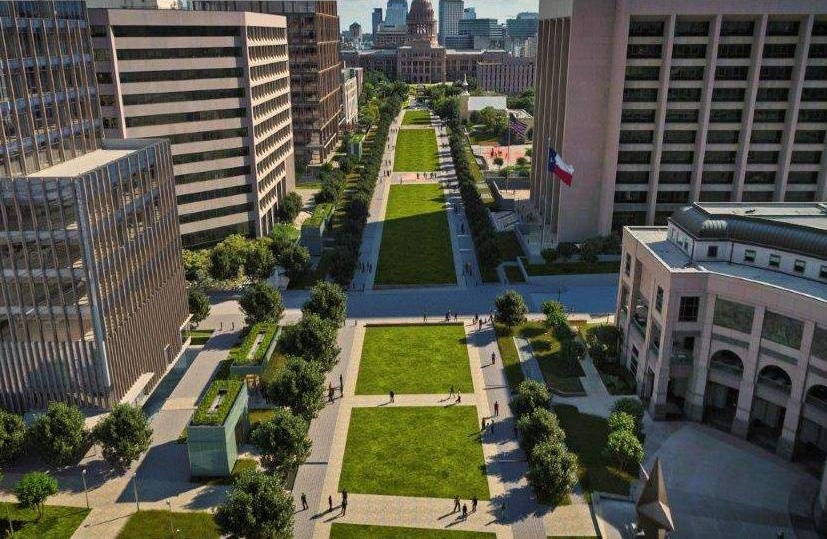
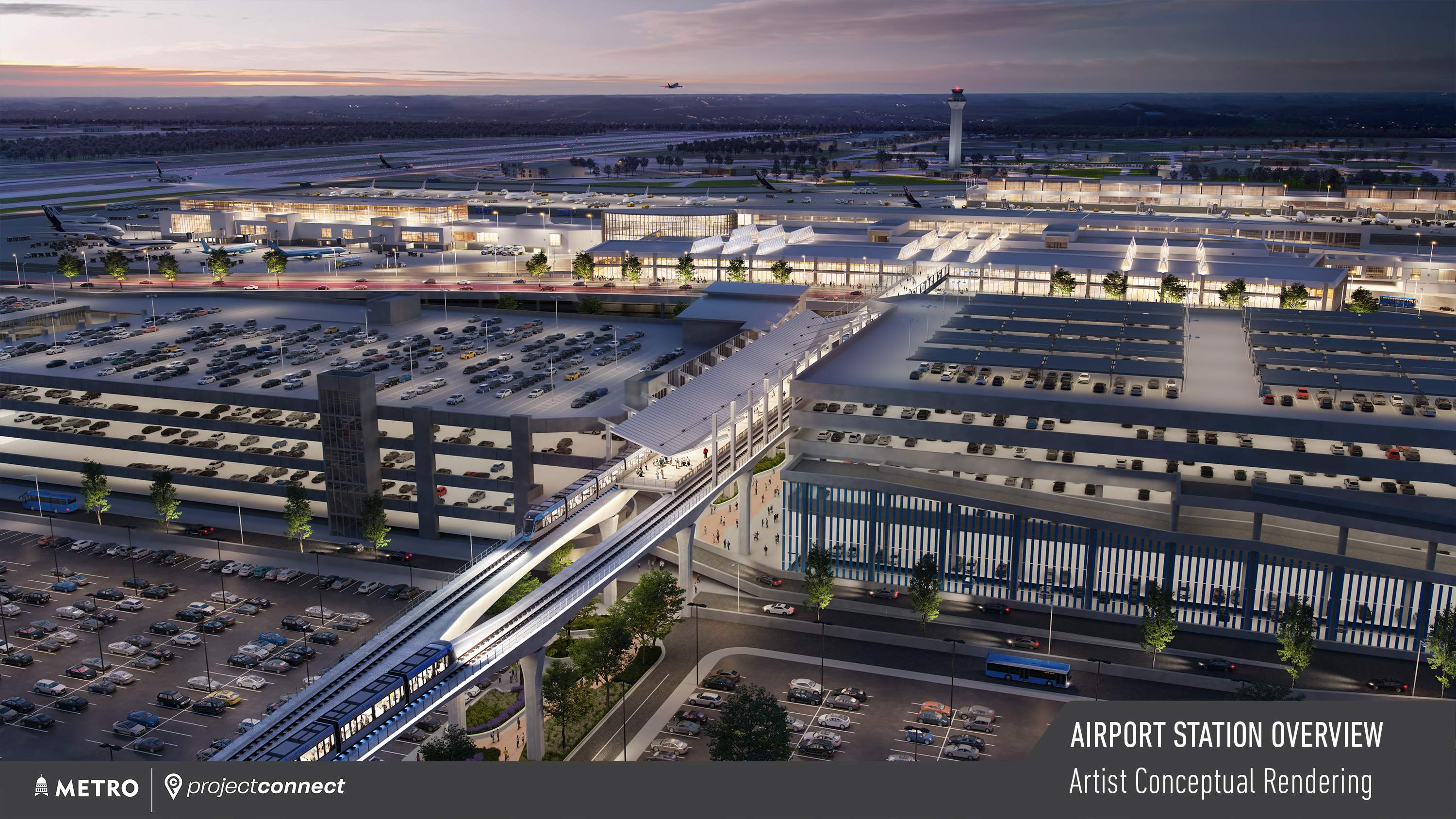
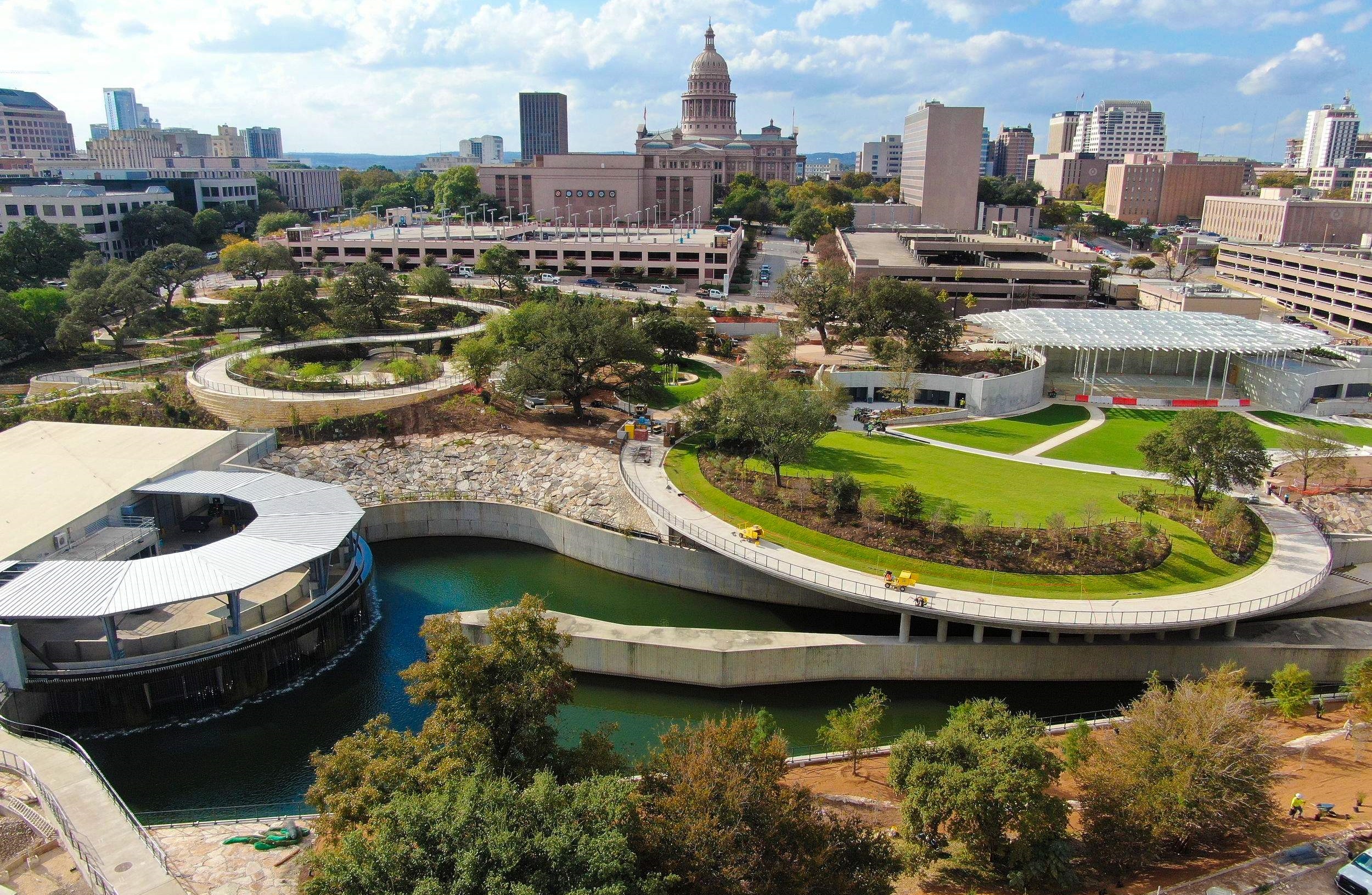
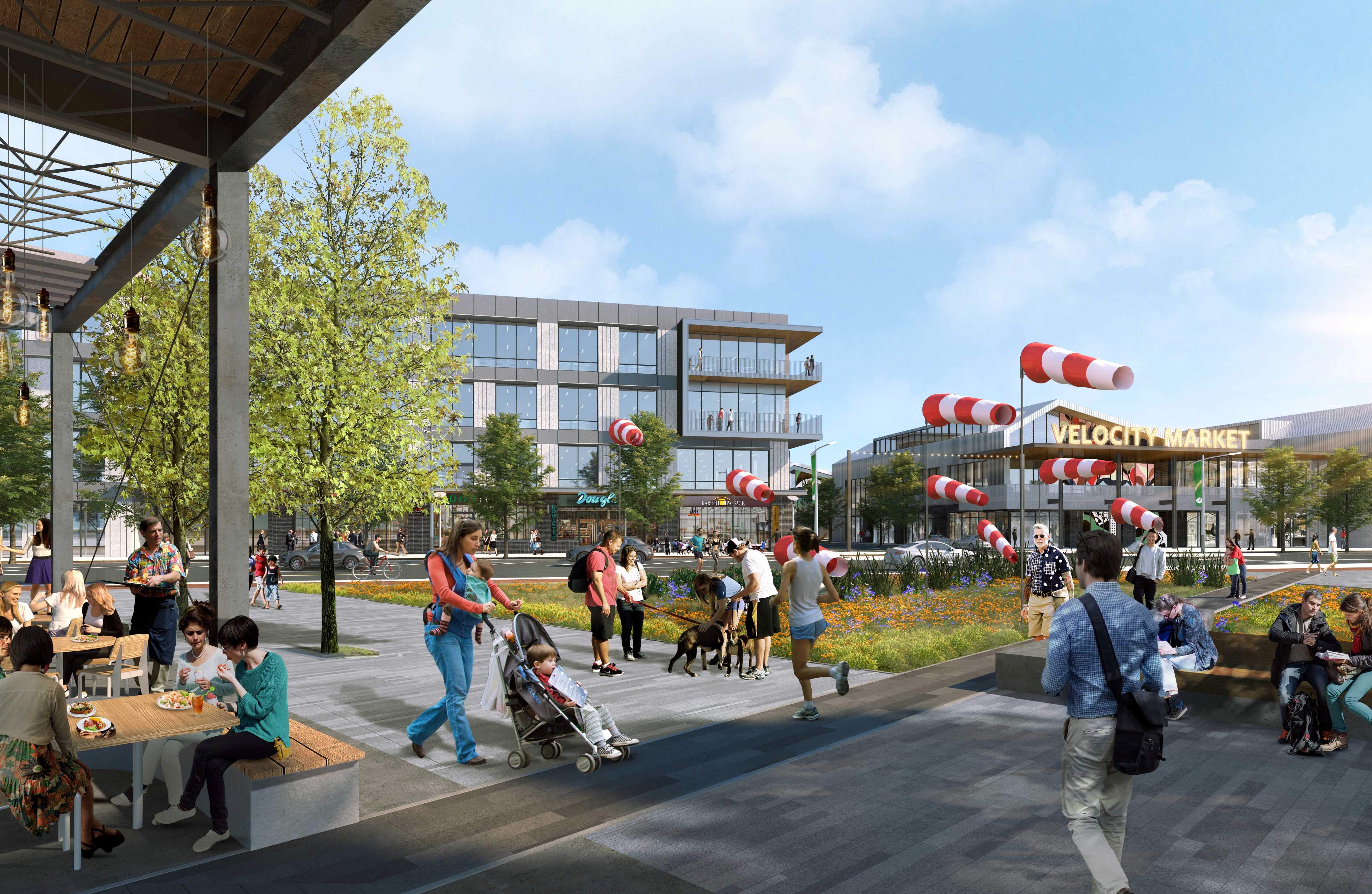
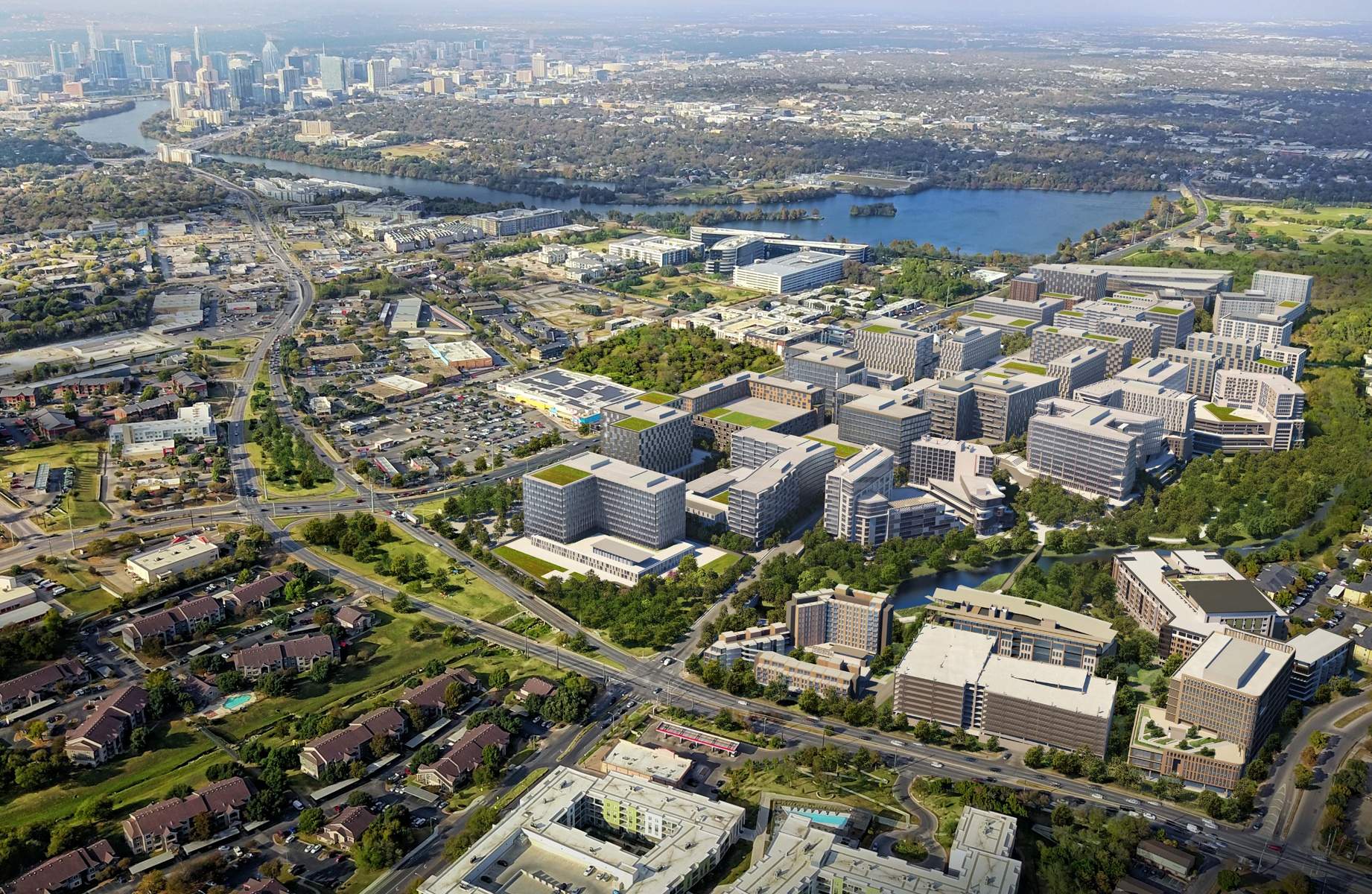
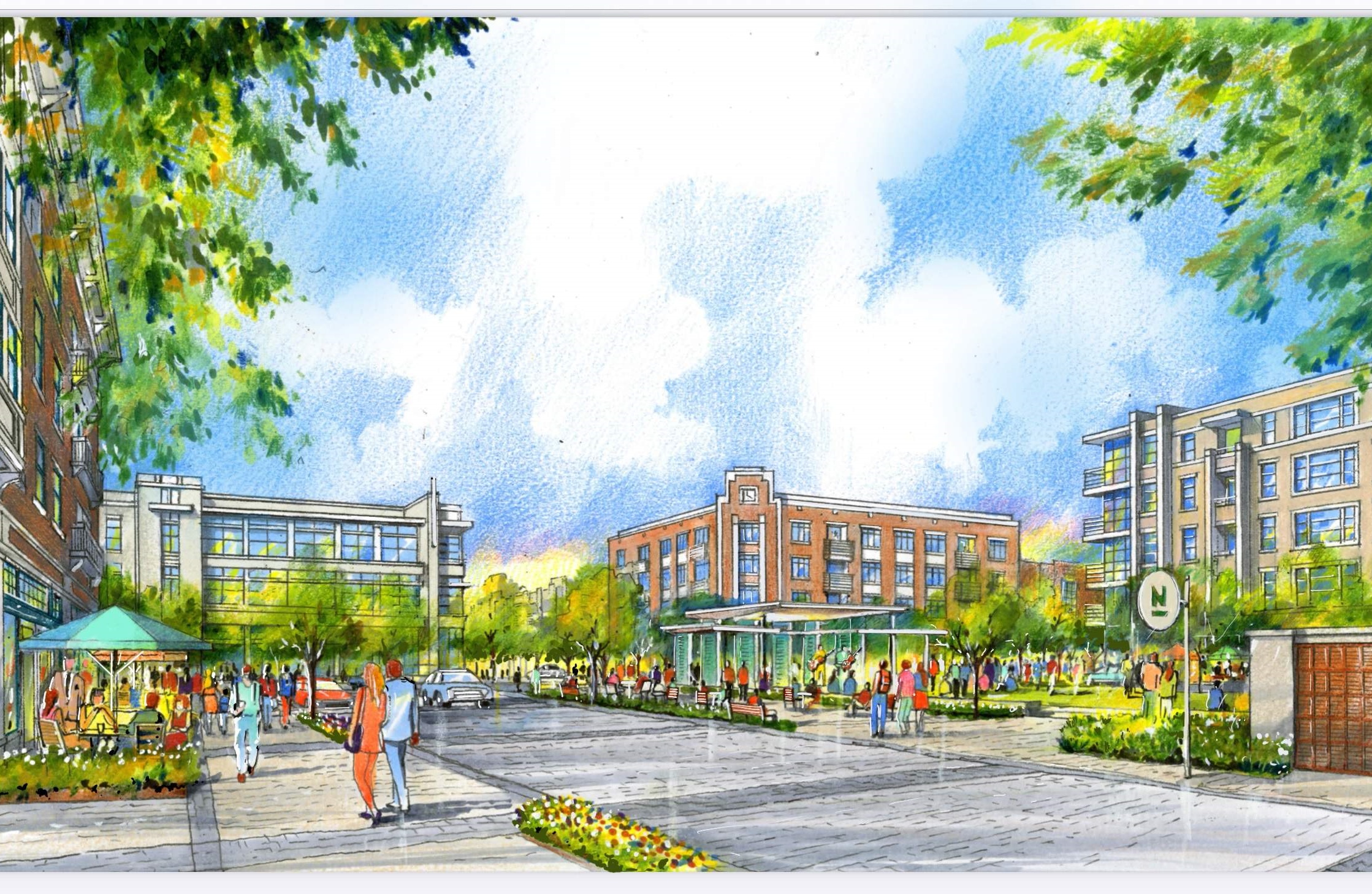
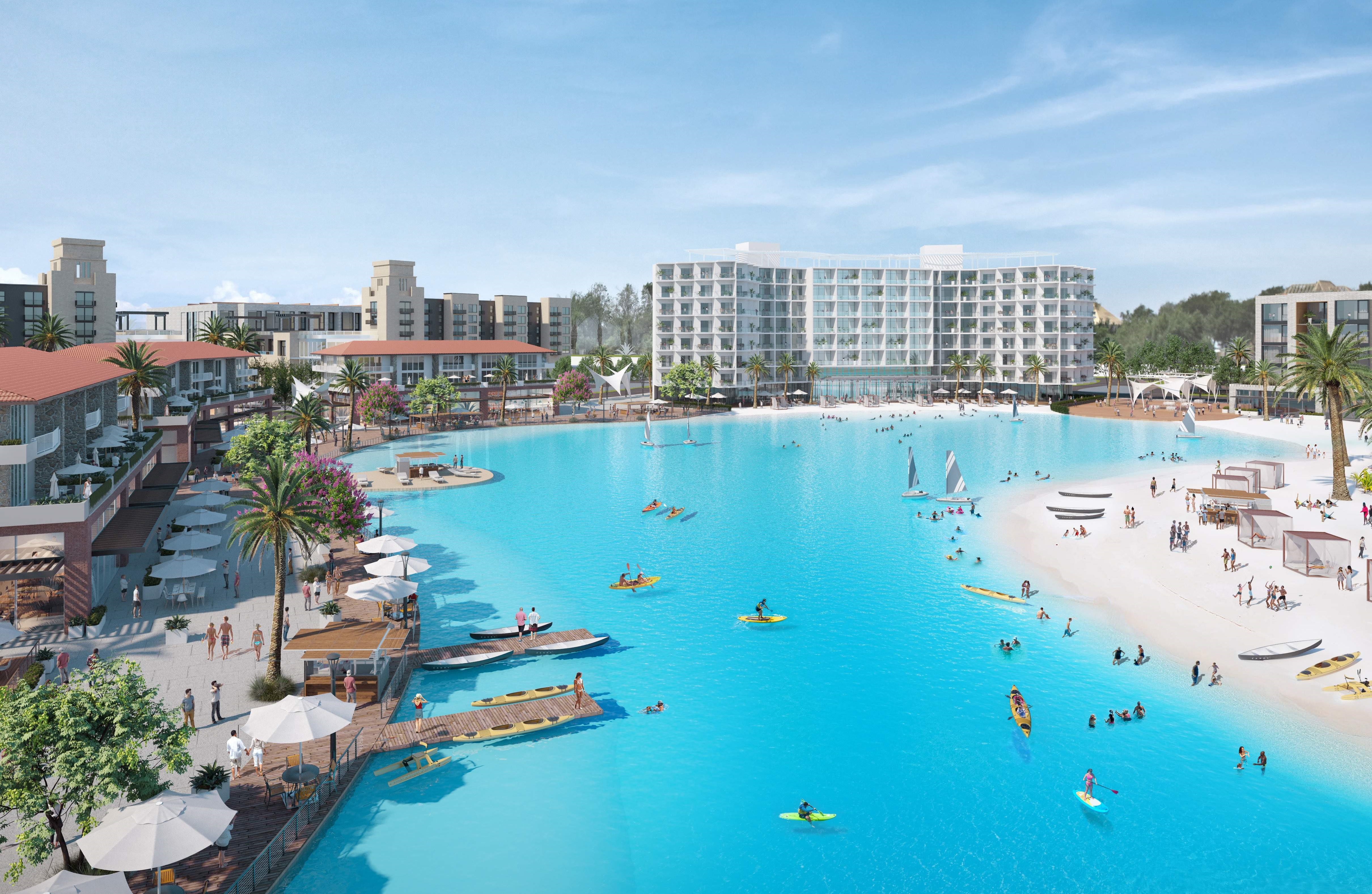
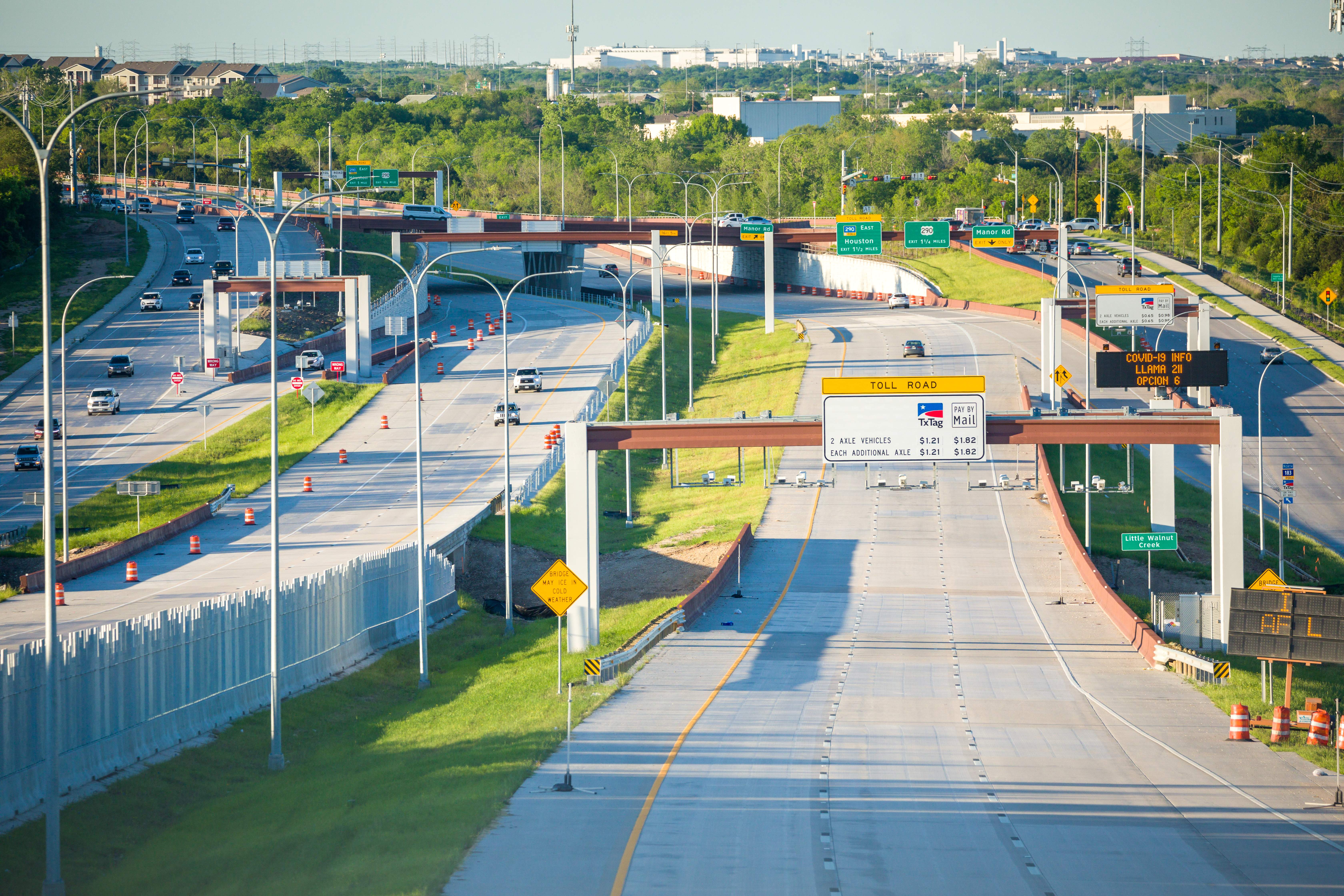






You must be logged in to post a comment.